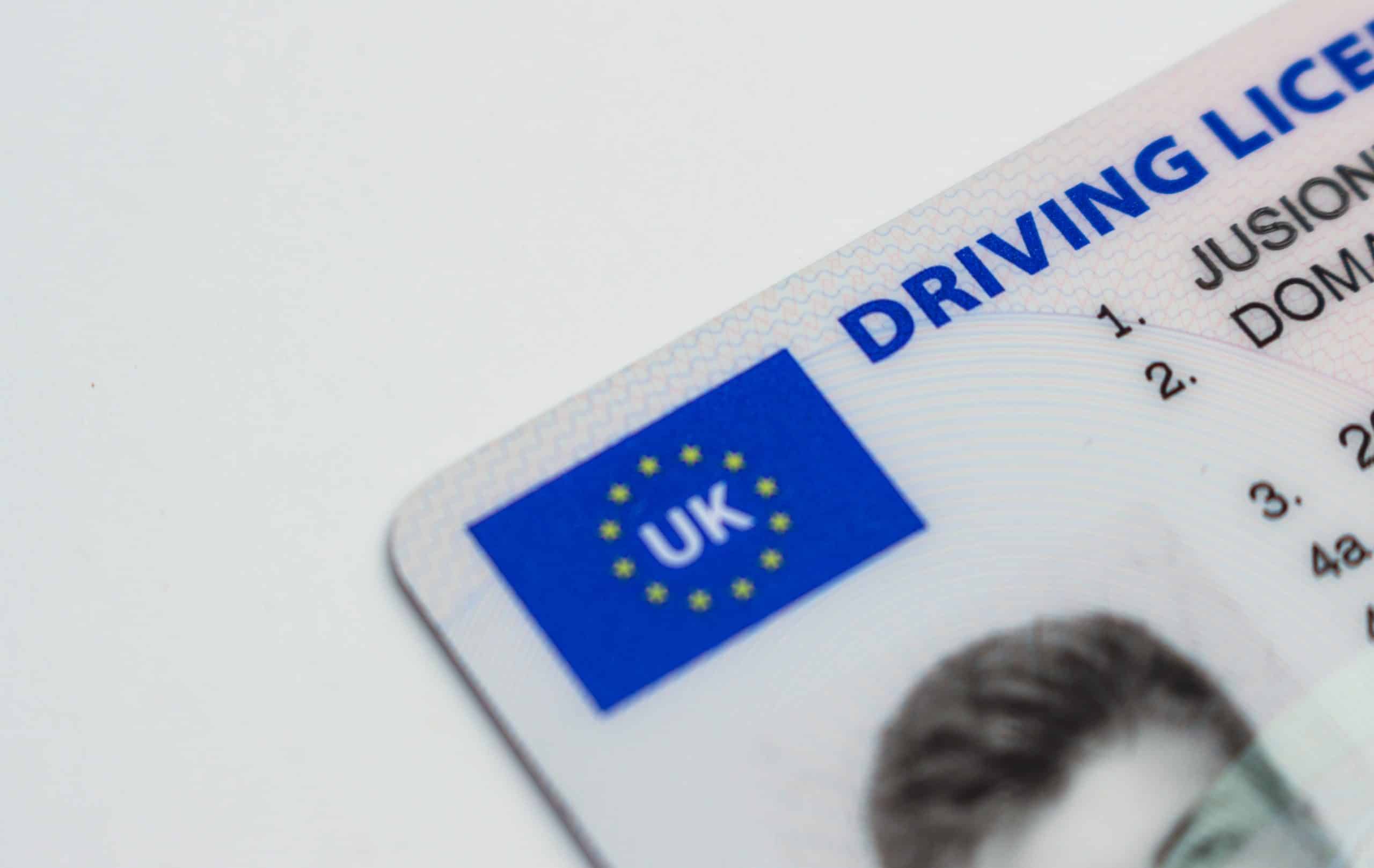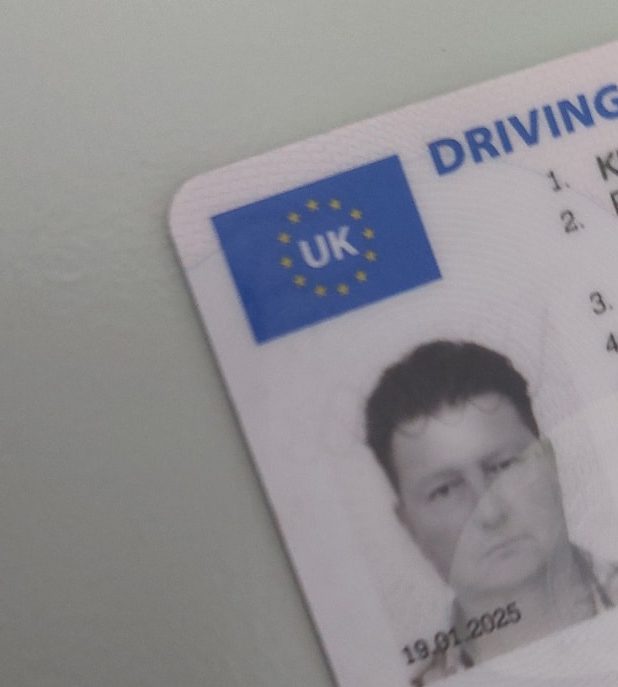
Introduction
The pass mark for the Hazard Perception Test (HPT) is 44 out of 75. This means that in order to pass the test, a learner driver must correctly obtain at least 44 points of the hazards presented in the test.
The pass mark is important for learner drivers because it serves as a measure of their ability to identify and respond to potential hazards on the road. Achieving the pass mark demonstrates that the learner driver has the necessary skills to be a safe and responsible driver. It indicates that they have a good understanding of the rules of the road and are able to identify and respond to potential hazards in a timely manner.
The pass mark is also significant because it is a requirement for learner drivers to pass both parts of the theory test, including the Hazard Perception Test, before they can book a practical driving test. This ensures that learner drivers have a comprehensive understanding of the rules and regulations of driving, as well as the ability to identify and respond to potential hazards on the road.
The pass mark for the Hazard Perception Test is determined by the Driver and Vehicle Standards Agency (DVSA). The DVSA sets the pass mark based on several factors. Firstly, the difficulty of the questions and video clips presented in the test is taken into consideration. The pass mark is set at a level that ensures that learner drivers are challenged enough to demonstrate their hazard perception skills, but not so difficult that it becomes unattainable for the average learner driver.
Additionally, the pass mark is determined based on the performance of test takers. The DVSA analyses the results of a series of trials conducted with a sample of learner drivers to assess their ability to identify and respond to potential hazards. This data is used to set the pass mark at a level that accurately reflects the average learner driver’s ability.
The pass mark for the Hazard Perception Test is reviewed regularly by the DVSA to ensure that it remains appropriate. This is done to account for any changes in the driving environment or the level of knowledge and skills required to be a safe driver. The pass mark may be adjusted if necessary to ensure that it continues to accurately assess a learner driver’s ability to identify and respond to potential hazards on the road.
Understanding the Hazard Perception Test
The Hazard Perception Test (HPT) is a computer-based test that is part of the UK driving theory test. It is designed to assess a learner driver’s ability to identify and respond to potential hazards on the road. The test consists of a series of video clips, each of which contains one or more hazards. The learner driver must identify the hazards and respond appropriately.
Format of the Hazard Perception Test
The HPT is a computer-based test that consists of 14 video clips. Each video clip is approximately one minute long and contains one or more hazards. The learner driver must identify the hazards and respond appropriately. The learner driver is presented with a series of video clips and must identify the potential hazard in each clip. The learner driver must then click on the hazard to indicate that they have identified it.
Number of Video Clips
The HPT consists of 14 video clips.
Length of Video Clips
Each video clip in the HPT is approximately one minute long.
Scoring Criteria
The learner driver is scored on their ability to identify and respond to potential hazards. The score is based on the learner driver’s response time to the hazard. The quicker the response, the higher the score. The maximum score for each video clip is 5 points. The total score for the HPT is 75 points.
To pass the HPT, the learner driver must score at least 44 points. The learner driver is awarded points for each hazard they identify and respond to correctly. It is important for the learner driver to watch all of the video clips carefully and not to click excessively, as the programme is designed to disqualify their score if they do so. The HPT is designed to assess the learner driver’s ability to identify and respond to hazards in a timely manner, simulating real-life driving situations.
Determining the Pass Mark
The pass mark for the hazard perception test is calculated based on a number of factors. The pass mark is set by the Driving and Vehicle Standards Agency (DVSA) and is the same for all candidates. The pass mark is determined by taking into account the difficulty of the test, the number of hazards correctly identified by the candidate, the number of false alarms, and the time taken to identify the hazards.
How is the pass mark calculated for the hazard perception test?
The pass mark for the hazard perception test is calculated by taking the total number of hazards correctly identified by the candidate and subtracting the number of false alarms. The resulting score is then compared to the pass mark set by the DVSA. If the candidate’s score is equal to or higher than the pass mark, they will pass the test.
What factors are considered in setting the pass mark?
The DVSA considers a number of factors when setting the pass mark for the hazard perception test. These factors include the difficulty of the test, the number of hazards correctly identified by the candidate, the number of false alarms, and the time taken to identify the hazards. These factors are taken into account to ensure that the pass mark is set at a level that accurately assesses a candidate’s ability to identify and respond to potential hazards on the road.
Is the pass mark the same for all candidates?
Yes, the pass mark for the hazard perception test is the same for all candidates. The pass mark is set by the DVSA and is not affected by the individual performance of the candidate. This ensures that all candidates are assessed on the same criteria and have an equal opportunity to pass the test.
Minimum Score Required to Pass
The minimum score required to pass the hazard perception test is 44 out of 75. This score is determined by the number of hazards correctly identified by the learner driver. The pass mark is the same for all categories of drivers.
How is the minimum score determined?
The DVSA sets the minimum score required to pass the hazard perception test based on the results of a large-scale study. This study involves a sample of learner drivers taking the test, and their scores are used to determine the pass mark. The pass mark is set at a level that ensures the majority of learner drivers can pass the test.
Are there different pass marks for different categories of drivers?
No, the pass mark is the same for all categories of drivers. Regardless of age, experience, or the type of vehicle being driven, all learner drivers must score a minimum of 44 out of 75 to pass the hazard perception test. This ensures that all drivers have a basic understanding of potential hazards on the road and are able to respond appropriately.
Consequences of Failing the Hazard Perception Test
Consequences of Failing the Hazard Perception Test
If a candidate fails the hazard perception test, there are a couple of consequences that they will face. These consequences include not being able to progress to take the practical driving test, not being able to obtain a full driving licence.
Can a candidate retake the test if they fail?
Yes, a candidate can retake the hazard perception test if they fail.
Are there any penalties for failing the hazard perception test?
There are no penalties for failing the hazard perception test itself, apart from nor being able to take the practical driving test.
Importance of the Pass Mark
Understanding the pass mark is crucial for learner drivers as it serves as a benchmark that they must meet in order to obtain a driver’s licence. The pass mark is determined by the Driving and Vehicle Standards Agency (DVSA) and is based on the performance of all candidates who have taken the test in the past. It is important for learner drivers to familiarise themselves with the pass mark in order to adequately prepare for the driving test and increase their chances of success.
The pass mark directly affects a candidate’s ability to obtain a driver’s licence. If a candidate fails to meet the pass mark, they will not be able to obtain a driver’s licence. This means that understanding the pass mark and striving to meet or exceed it is essential for learner drivers. By understanding the pass mark, learners can set realistic goals and focus their efforts on areas that need improvement. It also helps them gauge their readiness for the test and make necessary adjustments to their study and practice routines.
Achieving a high score on the hazard perception test can bring several benefits for learner drivers. Firstly, it demonstrates that the learner driver is competent and safe on the roads. A high score indicates that the driver has a good understanding of the rules of the road and is able to identify potential hazards. This can help instil confidence in the learner driver and make them feel more prepared and capable when driving.
Secondly, achieving a high score on the hazard perception test can increase the learner driver’s confidence when driving. By practising and improving their hazard perception skills, learners become more aware of potential hazards and develop better anticipation and reaction abilities. This heightened confidence can positively impact their overall driving performance and make them more comfortable and composed behind the wheel.
Lastly, The hazard perception test is an important component of the driving test, and a high score can contribute to an overall successful performance. By demonstrating their ability to effectively identify and respond to hazards, learners increase their chances of meeting the pass mark and obtaining a driver’s licence.
Understanding the pass mark is crucial for learner drivers as it serves as a benchmark they must meet to obtain a driver’s licence. the pass mark directly affects a candidate’s ability to obtain a licence, and understanding it helps learners set realistic goals and focus their efforts. achieving a high score on the hazard perception test brings benefits such as demonstrating competence and safety on the roads, increasing confidence when driving, and improving the chances of passing the overall driving test.
Tips for Achieving a High Score
Strategies for Achieving a High Score on the Hazard Perception Test
Identifying Hazards
The key to success on the hazard perception test is being able to identify potential hazards quickly and accurately. To improve performance on the test, learner drivers can use the following strategies:
- Look ahead and scan the road: Learner drivers should develop the habit of looking ahead and scanning the road for potential hazards. This includes being aware of other vehicles, pedestrians, cyclists, and animals. By looking ahead, learner drivers can spot hazards early and have more time to react.
- Look for clues: Learner drivers should pay attention to clues that could indicate a potential hazard. This includes looking for signs such as pedestrian crossings, bends in the road, or junctions. These clues can help learner drivers anticipate potential hazards and react accordingly.
- Be aware of other road users: Learner drivers should always be aware of other road users, including cyclists, pedestrians, and other vehicles. By being aware of other road users, learner drivers can anticipate their actions and react accordingly. This includes being aware of their own driving behaviour and how it may affect other road users.
- Anticipating potential hazards: Learner drivers should develop the ability to anticipate potential hazards based on their surroundings and the behaviour of other road users. This involves being able to predict potential hazards before they occur and taking appropriate action to avoid them.
Resources and practice Materials
There are several resources and practice materials available to help learner drivers prepare for the hazard perception test:
- Online tutorials and practice tests: There are many websites and online platforms that offer hazard perception tutorials and practice tests. These resources allow learner drivers to familiarise themselves with the test format and practice identifying hazards in different scenarios.
- CD-ROMs and DVDs:
- Driving schools: Learner drivers can also seek guidance from driving schools, where they can receive professional instruction and practice hazard perception skills under the guidance of an experienced instructor.
By utilising these strategies, techniques, and resources, learner drivers can improve their performance on the hazard perception test and increase their chances of achieving a high score.
Practice and Preparation
Learner drivers can practice for the hazard perception test by utilising various resources and methods.
Online practice Tests and Simulations
There are several online practice tests and simulations available that can help learner drivers prepare for the hazard perception test. These tests are designed to simulate the real test and provide learners with an opportunity to practice identifying hazards in different scenarios. They are usually timed and provide feedback on the learner’s performance. The official DVSA website offers a range of online practice tests and simulations that are specifically designed to help learners become familiar with the format of the hazard perception test and practice identifying hazards.
Other Resources
In addition to online practice tests and simulations, there are other resources that can be used to prepare for the hazard perception test. These include books, Appp., and websites that provide information on the test and offer tips for passing it. Learner drivers can also benefit from taking a driving lesson with a qualified instructor who can provide feedback on their ability to identify hazards and respond appropriately. Additionally, talking to experienced drivers about their experiences with the hazard perception test can provide valuable insights and advice.
Understanding the Scoring System
The scoring system for the hazard perception test is structured based on the learner driver’s ability to identify and respond to potential hazards. The score is calculated by taking into account the time taken to respond to the hazard and the accuracy of the response. The maximum score for each clip is five points, and the maximum score for the entire test is 75 points.
Correct Response
A correct response in identifying hazards is one that is made before the hazard has fully developed. The earlier the response is made, the higher the score. For example, if the learner driver identifies the hazard within the first second of it appearing, they will receive five points. If they respond within the second second, they will receive four points. If they respond within the third second, they will receive three points. If they respond within the fourth second, they will receive two points. If they respond within the fifth second, they will receive one point. If they do not respond within the fifth second, they will receive no points.
Penalties for Incorrect Responses
There are no penalties for incorrect responses. The learner driver will not lose any points for incorrect responses. However, they will not receive any points for incorrect responses either. It is important for the learner driver to accurately identify the hazards, but they will not be penalised for making mistakes.
The scoring system for the hazard perception test is based on the learner driver’s ability to identify and respond to potential hazards. the score is calculated based on the time taken to respond to the hazard and the accuracy of the response. a correct response is one that is made before the hazard has fully developed, and there are no penalties for incorrect responses.
How can candidates manage their time effectively during the test?
Candidates can manage their time effectively during the hazard perception test by following these strategies:
- Practice beforehand: Candidates should practice the test beforehand and become familiar with the format. This will help them to identify potential hazards quickly and accurately.
- Take their time: Candidates should not rush through the test. They should take their time to identify potential hazards and react appropriately.
- Allocate enough time to each video clip: Candidates should be aware of how much time they have to complete the test and should plan accordingly. They should also be aware of how much time they have to identify each potential hazard and should plan their responses accordingly.
Test Anxiety and Overwhelm
What should candidates do if they feel anxious or overwhelmed during the hazard perception test?
If candidates feel anxious or overwhelmed during the hazard perception test, it is important for them to take steps to manage these feelings. The first step is to recognise the signs of test anxiety, which can include physical symptoms such as sweating, trembling, and an increased heart rate, as well as mental symptoms such as difficulty concentrating and negative thoughts. Once candidates recognise these signs, they can implement strategies to manage their anxiety and regain focus.
Are there any relaxation techniques or strategies that can help manage test anxiety?
There are several relaxation techniques and strategies that can help manage test anxiety during the hazard perception test. These include:
- Deep breathing: Taking deep breaths can help reduce physical symptoms of anxiety and calm the mind. Candidates can practice deep breathing by inhaling deeply through their nose, holding their breath for a few seconds, and then exhaling slowly through their mouth.
- Positive self-talk: Talking to oneself in a positive and encouraging way can help reduce negative thoughts and boost confidence. Candidates can remind themselves that they have prepared for the test and are capable of succeeding.
- Visualisation: visualising oneself succeeding in the test can help reduce anxiety and increase confidence. Candidates can take a few moments to imagine themselves performing well and feeling calm and confident during the test.
- Exercise: Engaging in physical exercise before the test can help reduce physical symptoms of anxiety and clear the mind. Candidates can consider going for a walk or engaging in light exercise to help reduce their anxiety.
- Preparation: Being well-prepared for the test can help reduce anxiety. Candidates should ensure they have studied and practised adequately before the test, which can help boost their confidence and reduce anxiety.
How can candidates stay focused and calm during the test?
To stay focused and calm during the hazard perception test, candidates can implement the following strategies:
- Practice the test beforehand: practising the hazard perception test before the actual test can help familiarise candidates with the format and types of questions that will be asked. This familiarity can help reduce anxiety and increase confidence during the test.
- Stay positive: Candidates should focus on positive thoughts and remind themselves that they have prepared for the test. Positive self-talk can help reduce stress and anxiety and increase confidence.
- Get enough sleep: Getting enough sleep the night before the test is important for reducing stress and anxiety. Candidates should aim for 7-8 hours of sleep to ensure they are well-rested and able to stay focused during the test.
- Eat a healthy meal: Eating a nutritious meal before the test can help provide the energy needed to stay focused and calm. Candidates should avoid heavy or sugary foods that can cause energy crashes.
By implementing these strategies, candidates can effectively manage test anxiety and overwhelm, allowing them to perform their best during the hazard perception test.
Contact Smart Drive UK
Smart Drive UK can assist learner drivers in preparing for the hazard perception test by providing comprehensive online resources and one-on-one tuition. Our online resources include practice tests, video tutorials, and interactive quizzes to help learners understand the concepts and develop their hazard perception skills. Our experienced instructors can provide one-on-one tuition to help learners identify and address any weaknesses in their hazard perception skills.
Our services and resources are designed to help learners develop their hazard perception skills in a safe and effective manner. We provide practice tests that are designed to simulate the real test, allowing learners to become familiar with the format and the types of questions they will be asked. We also provide video tutorials that explain the concepts in detail and provide tips and strategies for improving hazard perception skills.
Finally, our experienced instructors can provide one-on-one tuition to help learners identify and address any weaknesses in their hazard perception skills. Our instructors are experienced in teaching learners of all levels and can provide tailored instruction to help learners develop their skills.
If you are a learner driver looking to improve your hazard perception skills, please get in touch with Smart Drive UK. Our experienced instructors can provide you with the resources and support you need to succeed in the hazard perception test. You can contact us through our website, by phone, or by email. We look forward to helping you on your journey to becoming a confident and safe driver.



